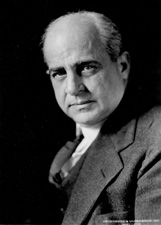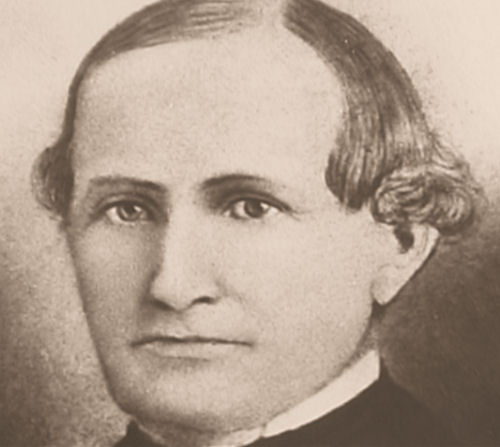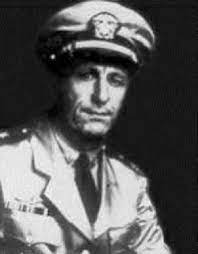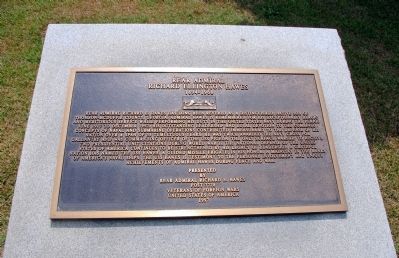
Aylette Hawes BUCKNER was born on 13 December 1849 in Sperryville, Rappahannock County, Virginia, son of John Strother BUCKNER and Lucy Ellen GIBSON. When Aylette Hawes Buckner took a shot at Union troops, his mother protested when they fired back at the boy. They told her that if he was old enough to shoot at them, then he was old enough for them to shoot back. Either these troops or others stole all their cattle and under cover of darkness young Aylette went over the mountain and recovered them.2
Aylette married Anna BURT, daughter of James Creth BURT and Frances Anne GIBSON, circa 1874 in Mardisville, Talladega County, Alabama. In 1900 Aylette Hawes BUCKNER lived in Rappahannock County, Virginia.
Mr. John Buckner of Sperryville had an automobile agency in Culpepper, and opened a branch agency in the little building in Sperryville at the intersection of Routes 600 and 1001. Mr. Aylette Buckner was one of the first Rappahannock citizens to own a Model “T” Ford, which he bought in Culpepper for $675 in 1913.3
Aylette Hawes BUCKNER died on 31 December 1933 in Sperryville, Rappahannock County, Virginia, at age 84. He was buried in Fairview Cemetery.

Harry B. Hawes was born in Covington, Kentucky to Smith Nicholas and Susan Elizabeth (Simrall) Hawes. His grandfather was Richard Hawes, U.S. Congressman and second Confederate Governor of Kentucky. The Hawes family was active in politics dating back to America’s earliest days. Besides Harry’s grandfather, his grand-uncles Aylett Hawes and Albert Gallatin Hawes as well as cousin Aylett Hawes Buckner were well-known political figures of the 19th century. After receiving his basic education in Kentucky, Hawes moved to St. Louis, Missouri in 1887. An old friend and Army comrade of his fathers soon found Hawes a position with the Third National Bank of St. Louis, where he worked while also pursuing higher education in his free time. He graduated from Washington University School of Law in 1896 and began a law practice under former Missouri Lieutenant Governor Charles P. Johnson, focusing mostly on corporate and international law.[4] This led Hawes to become involved in the issue of American annexation of the Hawaiian Islands. He served as a delegate to the Trans-Mississippi Congress, a convention held in Salt Lake City, Utah to discuss matters of statehood for existing U.S. territories and annexation of new lands.[3] At the convention he became acquainted with Lorrin A. Thurston, one of the leaders of the overthrow of the Kingdom of Hawaii in 1893 and establishment of the Republic of Hawaii.[3] A non-binding resolution in support of making Hawaii a U.S. territory was passed in no small part due to Hawes outspoken debate in favor. As a reward of sorts Thurston and the Republic of Hawaii offered Harry Hawes a diplomatic position and made him legal consul to guide their lobbying efforts, a position he held until Hawaii officially became a territory in 1898.
Albert Gallatin Hawes (April 1, 1804 – March 14, 1849) was a U.S. Representative from Kentucky, brother of Richard Hawes, nephew of Aylett Hawes, granduncle of Harry Bartow Hawes, and cousin of Aylett Hawes Buckner.
Born near Bowling Green, Caroline County, Virginia, Hawes moved to Kentucky in 1810 with his parents, who settled in Fayette County near Lexington. He pursued classical studies at Transylvania University,Lexington, Kentucky. He moved to Hancock County and settled near Hawesville. He engaged in agricultural pursuits.
Hawes was elected as a Jacksonian to the Twenty-second, Twenty-third, and Twenty-fourth Congresses (March 4, 1831 – March 3, 1837). He served as chairman of the Committee on Expenditures in the Post Office Department (Twenty-second through Twenty-fourth Congresses).
After his term in Congress, Hawes resumed agricultural pursuits. He moved to Daviess County and settled near Yelvington, Kentucky and continued agricultural pursuits. He died near Yelvington, March 14, 1849. He was interred in the Hawes family burial ground on the Owensboro and Yelvington Road.

Hugh Walker Hawes, who came from Kentucky in 1839 and settled on Matagorda Island, establishing a ranching tradition that was carried on through many generations until 1940 when the land was taken from the family by the government at the start of WWII.

Richard Ellington Hawes was born in Thomson Georgia, on February 12, 1894. He attended the University of Georgia on a baseball scholarship before transferring to Mercer University. There he won recognition in both baseball and football. He earned a law degree along the way, but passed up the bar exam to coach and play professional baseball.
When America entered World War I in 1917, Hawes enlisted in the Navy as a Fireman Second Class. Fifteen months later he accepted a temporary appointment as an Ensign, but reverted to Boatswain (Warrant Officer) in 1920.
In March 1926 Hawes joined USS FALCON (ARS 2) as Executive Officer. While aboard FALCON he played a key role in the salvage of USS S-51 off Block Island, RI in September 1925. For his part in that difficult and dangerous operation Boatswain Hawes received his first Navy Cross. He also assisted in the salvaging of USS S-4, which sank off Provincetown, MA in December 1927.
On February 18, 1929, Hawes was commissioned an Ensign by a special act of Congress in recognition of his services in salvaging the S-51 and S-4.
In January 1940 Lieutenant Hawes assumed command of USS PIGEON (ARS 6) and was serving in that role when the United States entered World War II.
On December 10, 1941 the PIGEON was docked at the Cavite Navy Yard on Manila Bay for repairs to her steering gear when Japanese warplanes attacked. Since Pearl Harbor three days before, Hawes had main steam pressure up and the full crew aboard, ready to get underway at an instant. Lashed to the minesweeper QUAIL (AM 15), which provided steering for both, PIGEON cleared the docks and headed for the relative safety of the bay to dodge the enemy bombs. By this time Cavite had become a hellish inferno. After separating from QUAIL Hawes could see that the submarine SEADRAGON (SS 194) was about to be engulfed by bombs and fire in her berth. Through heavy bombing and strafing, Lieutenant Hawes maneuvered the 187 foot PIGEON back to the flaming dock to haul the helpless submarine stern first from her berth. Another submarine and a minesweeper had just been sunk there by direct hits. The heat and flames were so intense that they blistered the ship’s paint, singed off body hair, and melted the brim of Hawes’ cap. But PIGEON’s crew managed to rig a line on the SEADRAGON and tow her to safety. For this heroic action, Hawes received his second Navy Cross and PIGEON was awarded the Presidential Unit Citation, the first warship to receive the award in World War II. SEADRAGON went on to distinguished service, earning eleven battle stars before the war ended.
Immediately after the attack Hawes found and mounted on his ship two 3 inch guns and twelve .50 caliber machine guns from the wrecked Navy Yard. By the end of December the new “gunboat” had received her second Presidential Unit Citation for shooting down several enemy planes and bombarding enemy troops. She was the only surface warship to win two Presidential Unit Citations in World War II.
Except for the brief periods when he was in transit or putting USS CHANTICLEER (ARS 1) and USS ANTHEDON (AS 24) into commission, Hawes spent virtually all of World War II at sea in the Pacific in command of his three ships. Like Hawes himself, his ships always had a reputation for efficiency and readiness. When he put CHANTICLEER into commission, he had depth charge racks installed so he could prosecute Japanese submarines. When he put ANTHEDON into commission, 92% of his crew were inductees and had never been to sea, but he sailed directly from commissioning to the Pacific war and within two hours of his arrival was servicing submarines. He received the Bronze Star for “undaunted courage and professional skill” for his command of that ship. As he left the Western Pacific theater in January 1945, the Commander, Submarines, Philippine Sea Frontier sent ANTHEDON a message of thanks and good wishes, describing Commander Hawes and his men as “ever ready, ever fearless.”
Hawes was promoted to Captain on March 25, 1945. On December 1, 1952 he was transferred to the retired list and promoted to Rear Admiral.

Rear Admiral Hawes died at his home in Thomson, Georgia, on December 30, 1968.
The USS Hawes was named after him.

Hello, my maiden name was Hawes and my father came from Derbyshire in England. I know the Hawes’ in our line came from Nottingham and Norfolk prior to his birth. Do you know if your Hawes family came from this area of England?
Regards
Glenda
I wonder about Stephen Hawes, who was the poet laureate in the court of King Henry VII. He was possibly the fifth illegitmate child of King Richard III, though one wonders, since Henry deposed Richard in a civil war.
I’m looking for the parents of my third great-grandmother Ann Hawes from Charsfield, England. No one appears to have the records.
Sylvia – do you have any more information, dates of birth etc? The area you are looking at in Suffolk has a number of Hawes families.
Have you tried Suffolk FHS?
Thanks Steve Jones